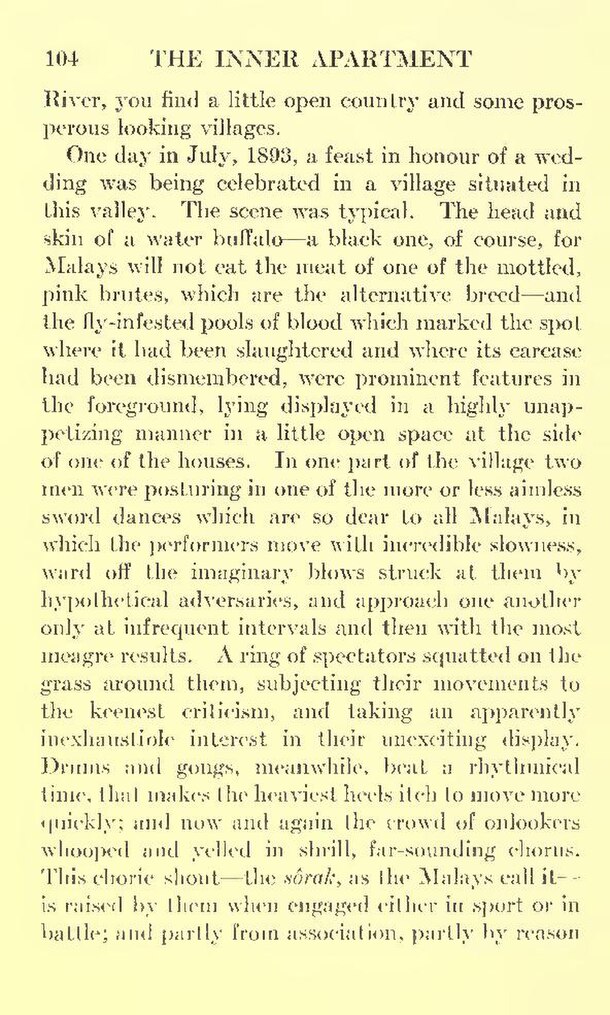River, you find a little open country and some prosperous looking villages.
One day in July, 1893, a feast in honour of a wedding was being celebrated in a village situated in this valley. The scene was typical. The head and skin of a water buffalo—a black one, of course, for Malays will not eat the meat of one of the mottled, pink brutes, which are the alternative breed—and the fly-infested pools of blood which marked the spot where it had been slaughtered and where its carcase had been dismembered, were prominent features in the foreground, lying displayed in a highly unappetizing manner in a little open space at the side of one of the houses. In one part of the village two men were posturing in one of the more or less aimless sword dances which are so dear to all Malays, in which the performers move will incredible slowness, ward off the imaginary blows struck at them by hypothetical adversaries, and approach one another only at infrequent intervals and then with the most meagre results. A ring of spectators squatted on the grass around them, subjecting their movements to the keenest criticism, and taking an apparently inexhaustible interest in their unexciting display. Drums and gongs, meanwhile, beat a rhythmical time, that makes the heaviest heels itch to move more quickly; and now and again the crowd of onlookers whooped and yelled in shrill, far-sounding chorus. This choric shout—the sôrak, as the Malays call it—is raised by them when engaged either in sport or in battle; and partly from association, partly by reason
